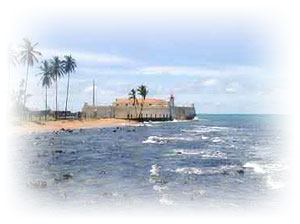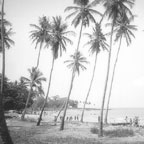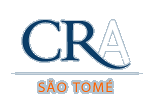|
History
The islands of São Tomé e Príncipe
were uninhabited until 1470, when portuguese sailors João
de Santarém and Pedro Escobar discovered them.
Sugar cane is brought to the islands in the 15th century,
but the brazilian competition and the constant local rebellions
led agriculture to a decline in the 16th century. As such,
the end of the sugar trade turned the islands into slave
outposts.
During one of the several internal revolts in the islands,
a slave named Amador, a national hero, controlled two
thirds of the island of São Tomé. Agriculture
is not stimulated in the archipelago until the 19th century,
with the growing of cocoa and coffee.
During these two centuries of the Cocoa Cicle,
complex administrative structures were created. They were
comprised of several public services, headed by a chefe
de serviço. The decisions he made had to be
sanctioned by the Governor of the Colony, who, in order
to legislate, resorted to a Government Council and a Legislative
Assembly.
For a long time the governor was commander-in-chief of
the armed forces, until with armed battle in other territories,
an Independent Command was created.
The Governor periodically travelled to Lisbon, to inform
the government and bring further instructions.
In the island of Príncipe, in representation of
the Government, there was a regional administrator with
large powers. The colony was divided into two areas, São
Tomé and Príncipe, and in several parishes.
In 1960, a nacionalist group emerges, opposing to POrtuguese
domination. In 1972, the group turns into MLSTP (Liberation
movement for São Tomé e Príncipe),
with marxist orientation. Thus, in 1975, after 500 years
of Portuguese control, the archipelago was made independent.
After its independence, a socialist regime, with a single
party under MLSTP was created. Ten years after the independence
(1985), the economic opening of the country started. In
a 1990, a new constitution was adopted, instituting multiple
parties.
In the following year, legisltive elections placed PCD-GR
(Democratic Convergence Party – Reflexion Group)
as the great winner, by retaining most of the seats in
the assembly. The election for president counted with
the participation of Miguel Trovoada, former prime-minister
who had been exiled since 1978. Running unopposed, Trovoada
was elected for the position. In 1995, a local government
is instituted in the island of Príncipe, with the
participation of five members. In the parliamentary election
of 1998, MLSTP changed its name to PSD (Social Democratic
Party) and conquered a win in the parliament, which made
it possible for them to appoint the new prime-minister.
|
| 
|

